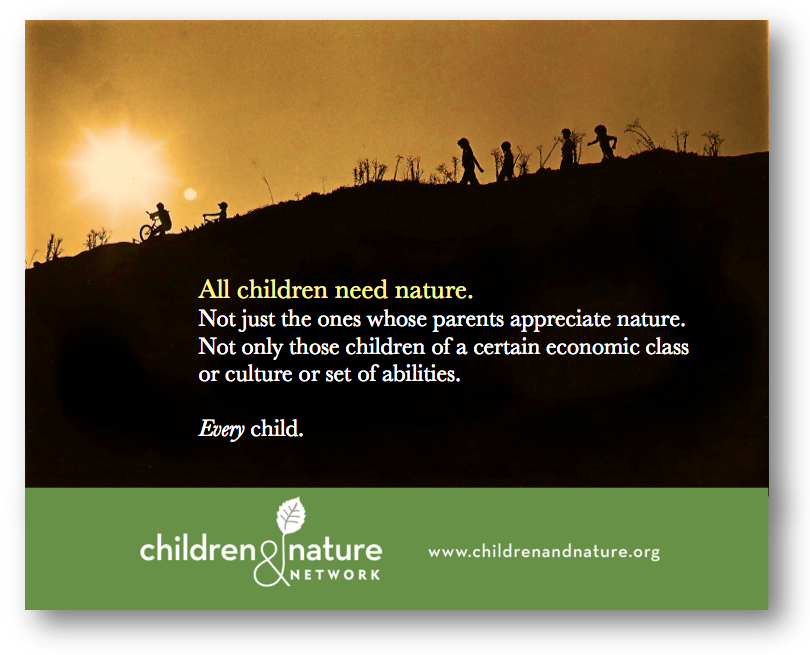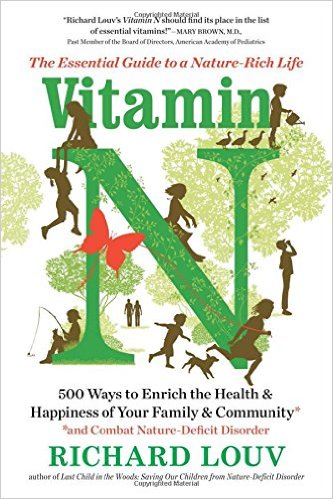We Need An NRA For Nature
The other day, I received a note from a good friend, photojournalist Anne Pearse Hocker. In the 1970s, she snuck across a no man’s land into the Wounded Knee encampment, and spent weeks photographing the protest. Those photos are currently in the Smithsonian Museum. A widow, she now lives in a cabin with two dogs, two cats and two hunting falcons.
She loves the wild landscape of the West, is dismayed by new threats to it, and is surprised by a change in her internal landscape.

“Something new is needed,” she wrote. She referenced the Women’s March in Helena: “Here in deep red Montana, over 10,000 people marched in Helena, smashing all records and expectations. The organizers started out hoping for 500. The night before the march they predicted possibly 5,000. Meanwhile, the state’s Central Democratic Committee virtually ignored it. As if it never happened.” She does not believe that her own party understands the growing anger and sense of urgency that she and others like her feel. “Someone or something needs to ride that wind before it gets away.”
It’s time to build an NRA for nature — an environmental or conservation force comparable to the nation’s powerful gun lobby, the National Rifle Association — one capable of striking fear into the heart of, say, any climate-change-denying politician, Republican, Democrat, or Other.
You may or may not like the NRA, but you have to admit that the organization, like the Tea Party, knows how to get its way.
A handful of green groups aspire to that political power, and many have done a good job influencing regulatory policies, but I can’t recall the last time I read about an environmental or conservation group mounting a successful campaign to boot multiple members of Congress from office. Maybe it’s happened, but not often enough. And now the ante is upped. If political candidates aren’t afraid of environmentalism’s political power, what good is environmental activism?
Have we reached a point where environmentalism is less about political power than about moral preening? Or lifestyle choices?
“The last few weeks have rocked the environmental movement. In the wake of the November elections, environmentalists are deeply concerned about the future of the Paris climate accord, the rollback of federal environmental protections, and even the fate of the U.S. Environmental Protection Agency itself,” writes Nathaniel Stinnett, founder of the Environmental Voter Project,
He points to an inconvenient truth: as a group, environmentalists are miserable voters. Approximately 20.1 million self-identified environmentalists are registered to vote, he says, but in the 2014 mid-term elections, only 4.2 million of them voted. In the 2012 presidential election barely 10 million environmentalists voted.
 Meanwhile, in 2014, NRA-backed candidates won over 91 percent of Congressional races in which they endorsed a candidate — even though 90 percent of Americans supported background checks for gun owners, even in the wake of the killing of 26 people, mostly schoolchildren, at Sandy Hook Elementary School. (After Sandy Hook, the NRA claimed its membership actually surged.)
Meanwhile, in 2014, NRA-backed candidates won over 91 percent of Congressional races in which they endorsed a candidate — even though 90 percent of Americans supported background checks for gun owners, even in the wake of the killing of 26 people, mostly schoolchildren, at Sandy Hook Elementary School. (After Sandy Hook, the NRA claimed its membership actually surged.)
Why is it that the NRA can have its way with Congress but environmentalists and conservationists are so often on the defensive?
One explanation is that, for many Americans, the environment – especially when it comes to climate change – is an abstraction.
This is true in part because so many indoor kids or their parents never have the chance to fall in love with nature. It’s also true because of the most common language of environmentalism, oddly both opaque and apocalyptic. By contrast, the NRA’s focus is as hard and tangible as gunmetal. Guns and gun ownership are more deeply embedded in the national character than environmentalism, which is newer on the scene. Gun owners are more focused on individual self-defense than on a generalized threat of gun violence. And gun ownership is protected as a Constitutional right (interpretations will vary).
Consequently, to many Americans gun ownership is not only tangible, but a deeply personal and emotional issue – and that is the way the NRA frames it.
The NRA doesn’t have a lock on emotion; it’s how they aim it. Most Americans, of all political persuasions, were deeply upset by Sandy Hook and other massacres. Yet, after Sandy Hook, legislation requiring background checks once again failed to pass the Senate. Marketing, campaign spending, overwhelming lobbying power, a powerful industry, and political fear ruled the day.
The kind of emotion that the NRA taps is different from the episodic mass tragedies of gun violence. Those tragedies are like thunderstorms, violent for a spell and then a memory; but the NRA’s rain is slow, relentless, never ceasing.
It’s time to learn from the NRA, even if the lessons are uncomfortable.
Let’s start by expanding on a familiar concept. Most thinking people understand the NRA’s power. Consequently, they would get the idea of an NRA for nature. That frame is clear, concise, and potent. An NRA for nature (insert proper name and acronym here) could take form as a new membership organization, massive expansion of an existing organization, a tight network of multiple groups, or a shared campaign launched by all of the above.
 Money will be an issue. Nonprofits tend to compete for support from the same funders, and therefore tend to see each other as competitors. Trump’s election will undoubtedly grow the number of individual donations, but government money for environmental causes will likely shrink. Also, 501(c)(3) nonprofits are limited in what they can do politically. Public education is allowed; lobbying for specific bills and campaigning for candidates is restricted. “Social welfare” organizations like the NRA are classified as 501(c)(4), and allowed to lobby. The tradeoff: donations are not deductible. That doesn’t discourage loyal members from sending checks. To NRA members, it’s not about the deduction, it’s about the principle.
Money will be an issue. Nonprofits tend to compete for support from the same funders, and therefore tend to see each other as competitors. Trump’s election will undoubtedly grow the number of individual donations, but government money for environmental causes will likely shrink. Also, 501(c)(3) nonprofits are limited in what they can do politically. Public education is allowed; lobbying for specific bills and campaigning for candidates is restricted. “Social welfare” organizations like the NRA are classified as 501(c)(4), and allowed to lobby. The tradeoff: donations are not deductible. That doesn’t discourage loyal members from sending checks. To NRA members, it’s not about the deduction, it’s about the principle.
Since 2014, green political action committees (PACs) and super PACs, which aren’t as beholden to limits on fundraising or spending are on the upswing. Billionaire Tom Steyer’s NextGen Climate Action has spent millions on political races. Other players include the Sierra Club’s Independent Action, the League of Conservation Voters’ super PAC, the Environment America Action Fund, Defenders of Wildlife Action Committee and Crowdpac, which uses crowdfunding.
Green super PACS may someday have superpowers, but not yet. They failed to make much of a dent in the 2016 elections. (Although the outcomes might have been even worse without their participation.)
Republicans not only won the White House, but kept their majorities in Congress. Republicans now dominate 32 state legislatures and 33 governors’ mansions, accounting for roughly 80 percent of the U.S. population. Unlike in the past, when conservatives were some of the highest-profile conservation leaders, most Republicans resist environmentalism. (Not all: this week a group of Republicans led by former Secretary of State James Baker called for a tax on carbon to fight climate change.)
But the night is still young.
One can at least imagine a coordinated campaign for more philanthropy, more individual donors, a network of industries and deep-pocketed individuals — especially from the high-tech world — to support 501(c)(3) groups that educate and grow the social base, and an even more aggressive effort to increase contributions to the 501(c)(4) organizations that lobby and work for the election of political candidates. Add to that a permanent, relentless voter mobilization drive. If it reaches scale, that three-pronged campaign, while not identical in form, could be a green equivalent of the NRA.
Along with more political action, we need a broader constituency to support good candidates, one with greater diversity of religion, race, ethnicity and economics.
Guns and the Second Amendment are powerful symbols to rally around. But so are urban gardens, natural schoolyards, parks, clean air and water, wilderness, and the human right that every child has to the psychological, physical and spiritual gifts of nature. And, of course, the tenuousness of our tenure on the planet – a more abstract issue, but as real as rain.
Our greatest barrier is despair. For years, Americans have been trapped in a dystopian trance, a passive assumption of a post-apocalyptic future. We need a balancing set of images, ones that depict a future that is not only energy-efficient, but nature-rich, with cities and countryside that serve as engines of biodiversity and health.
Making that tangible to voters won’t happen overnight, but it’s possible — especially if we don’t write off Republicans or rural America (as some progressives have suggested) or big chunks of the population who do care about nature but prefer snowplows to skis, bird hunting to bird watching.
The children and nature movement may point the way. It brings together conservatives and liberals and people from all walks of life. We don’t have to agree on everything to care about our children’s connection to the natural world. We want something better for them.
Plank by plank, we can build a bigger boat. Anne of Montana sees the potential. In a state not known for protest marches, the women’s march “blew the doors off,” she says. “It surprised everyone. A subsequent rally for public lands a week later garnered about 1,000 people in Helena, with many conservative sportsmen’s groups participating, and the governor spoke. It was twice the size of a similar public lands rally in 2015.” The crowd probably included NRA members, who care about land and water and air, too.
“Although I have guns and use them, I do not belong to the NRA,” says Anne. “But I do respect their marketing and passion.”
To Anne’s surprise, she’s beginning to feel some optimism about Montana, about the nation, and about her own role. She may be numb to statistics about melting ice caps, but she can feel the land. “I am one of the angry ones,” she says. Something new is rising in her. It’s tagged to emotion, not numbers, not logic alone. “I believe the usual models of the progressive movement are no longer working. Just my opinion. Facts are only mildly interesting to someone who is emotionally on fire.”
She’s looking for ways to turn her fire into light.
Photo Shutterstock/DNF Style

